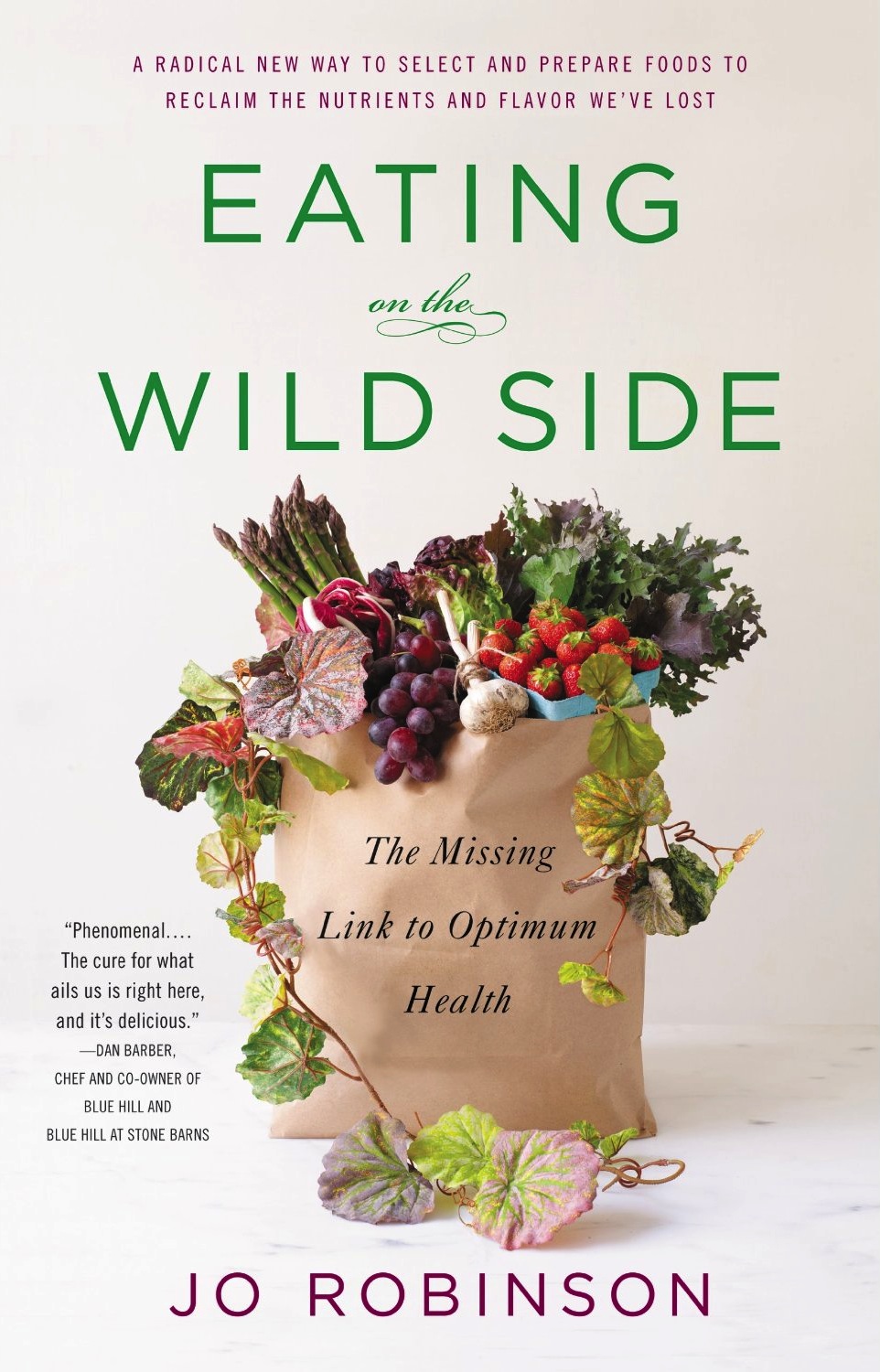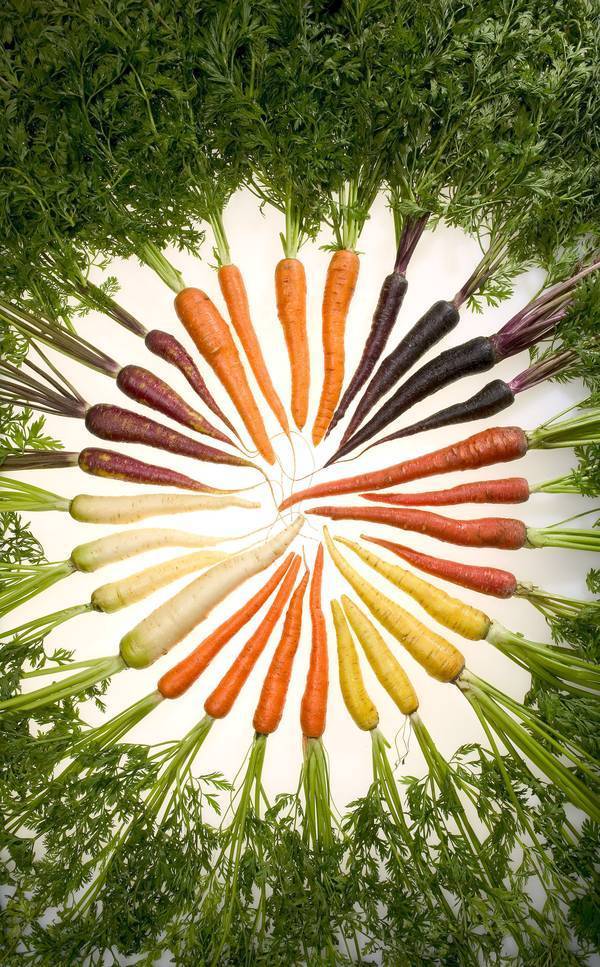Eating on the Wild Side, Jo Robinson (Little, Brown and Company, 2013)
 Jo Robinson – not a next-door neighbor, but a neighbor nonetheless – lives on Vashon Island in the middle of Puget Sound. Until this year, Jo was known as a grass-fed beef expert for her research and collection of data about the nutritional value of beef raised on grass rather than grain.
Jo Robinson – not a next-door neighbor, but a neighbor nonetheless – lives on Vashon Island in the middle of Puget Sound. Until this year, Jo was known as a grass-fed beef expert for her research and collection of data about the nutritional value of beef raised on grass rather than grain.
With the publication of Eating on the Wild Side, Jo turned her expertise to fruits and vegetables in order to “reclaim the nutrients and flavor we’ve lost” over millennia of natural selection and selective breeding.
In her book, Jo focuses on phytochemicals or phytonutrients (the words are interchangeable) contained in plants – thus the “phyto” in the name. Those include nutrients such as carotenoids, lutein, lycopene, flavanols, prebiotics, and probiotics. The term “antioxidant” is also the equivalent of “phytonutrient” when – and only when – it is used to describe plant-based nutrients.
More than 10 years of research analyzing published scientific reports provided the basis for Jo’s discussion of the nutritional differences between the plants that human beings ate for most of their existence in comparison with modern varieties now available in the grocery store. In fact, she believes that if we were still eating wild fruits and vegetables we would not need to the supplements and “functional foods” pushed at us by the “neutraceutical*” industry.

Carrots, for example, were historically smaller than today’s varieties and colored purple or red rather than bright orange. In fact, orange carrots resulted from a cross between white and purple carrots about 400 years ago. Those big orange carrots we see in the grocery produce section have so many fewer phytonutrients than the dark colored ones.
Today’s potatoes and corn are full of starches and sugars. In fact, today’s sweet corn has about the same amount of sugar as a candy bar. The new supersweet varieties are as much as 40% sugar.
What can you do about it? Select fruits and vegetables that are closer to their wild relatives, are deeper and brighter colored, and contain fewer sugars and starches. And follow Jo’s tips for preparation and storage, such as:
- Cooked carrots have twice as much beta-carotene as raw carrots.
- Red cherry tomatoes have up to twelve times more lycopene than red beefsteak tomatoes.
- Ounce per ounce, there is more fiber in raspberries than in bran cereals.
Get your copy here and discover how you can eat your way through the “next step in the food revolution.” Indie Bound will connect you with an independent bookstore on the street or online where you can buy this book.
*Nutraceutical, a portmanteau of the words nutrition and pharmaceutical, is applied to products that range from isolated nutrients, dietary supplements and herbal products, genetically modified food, and enhanced or enriched processed foods such as cereals, soups, and beverages.
